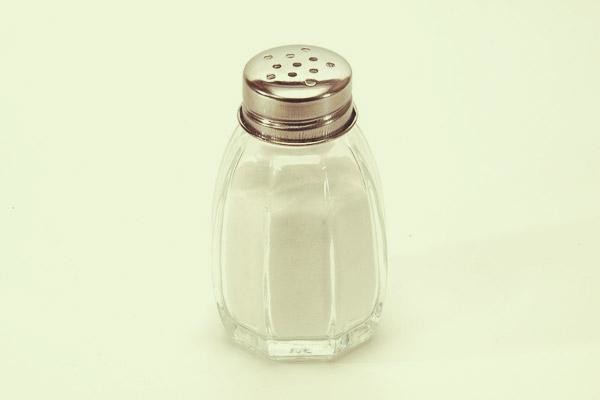
You may think you’re one of the lucky ones who can eat all the salty snacks and convenience foods you want and still register low numbers on the blood pressure cuff. But, new research suggests you may not be so lucky after all.
A review paper co-authored by two faculty members in the University of Delaware College of Health Sciences and two physicians at Christiana Care Health System provides evidence that even in the absence of an increase in blood pressure, excess dietary sodium can adversely affect target organs, including the blood vessels, heart, kidneys and brain.
Authors of the paper, “Dietary Sodium and Health: More Than Just Blood Pressure,” include William Farquhar and David Edwards in UD’s Department of Kinesiology and Applied Physiology; William Weintraub, chief of cardiology at Christiana Care; and Claudine Jurkovitz, a nephrologist epidemiologist and senior scientist in the Value Institute Center for Outcomes Research at Christiana Care.
The paper was published in the March 17 issue of the Journal of the American College of Cardiology.
“Blood pressure responses to alterations in dietary sodium vary widely, which has led to the concept of ‘salt-sensitive’ blood pressure,” says Farquhar. “There are no standardized guidelines for classifying individuals as having salt-sensitive blood pressure, but if blood pressure increases during a period of high dietary sodium or decreases during a low-sodium period, the person is considered salt sensitive. If there’s no change in blood pressure with sodium restriction, an individual is considered salt resistant.”
However, the research cited in the paper points to evidence of adverse effects on multiple target organs and tissues, even for people who are salt resistant.
Bad news for the body
Potential effects on the arteries include reduced function of the endothelium, which is the inner lining of blood vessels. Endothelial cells mediate a number of processes, including coagulation, platelet adhesion and immune function. Elevated dietary sodium can also increase arterial stiffness.
Farquhar and Edwards have done previous work in this area, with one study showing that excess salt intake in humans impairs endothelium-dependent dilation and another demonstrating that dietary sodium loading impairs microvascular function. In both cases, the effects are independent of changes in blood pressure.
They review their work and the growing body of evidence to support a deleterious effect of dietary salt on vascular function independent of blood pressure in a recent invited paper in Current Opinion in Nephrology and Hypertension.
“High dietary sodium can also lead to left ventricular hypertrophy, or enlargement of the muscle tissue that makes up the wall of the heart’s main pumping chamber,” Edwards says. “As the walls of the chamber grow thicker, they become less compliant and eventually are unable to pump as forcefully as a healthy heart.”
Regarding the kidneys, evidence suggests that high sodium is associated with reduced renal function, a decline observed with only a minimal increase in blood pressure.
Finally, sodium may also affect the sympathetic nervous system, which activates what is often termed the fight-or-flight response.
“Chronically elevated dietary sodium may ‘sensitize’ sympathetic neurons in the brain, causing a greater response to a variety of stimuli, including skeletal muscle contraction,” Farquhar says. “Again, even if blood pressure isn’t increased, chronically increased sympathetic outflow may have harmful effects on target organs.”
Difficult detective work
Jurkovitz points out that studying the effects of salt restriction on clinical outcomes is not easy. Challenges include accurate assessment of intake, long-term maintenance on a defined salt regimen, and the need for large numbers of patients and extended follow-up to obtain enough outcomes for meaningful analysis.
However, she says, “A large body of evidence confirms the biological plausibility of the association between high sodium intake and increases in blood pressure and cardiovascular events.”
This evidence has resulted in the American Heart Association’s recommendation that we consume less than 1,500 mg of sodium a day.
Shaking the salt habit
Taking the salt shaker off the table is a good way to start, but it’s probably not enough, says Weintraub, whose work focuses on cardiology outcomes.
“Approximately 70 percent of the sodium in our diets comes from processed foods, including items that we don’t typically think of as salty such as breads and cereals,” he says. “Also, restaurant food typically contains more salt than dishes prepared at home, so eating out less can help reduce salt intake, especially if herbs and spices — instead of salt — are used to add flavor to home-cooked meals.”
But the authors acknowledge that shaking the salt habit won’t be easy, and it won’t happen overnight.
“Reducing sodium will take a coordinated effort involving organizations like the AHA, food producers and processors, restaurants, and public policy aimed at education,” Weintraub says.
Story Source:
The above story is based on materials provided by University of Delaware. Note: Materials may be edited for content and length.
Journal Reference:
- William B. Farquhar, David G. Edwards, Claudine T. Jurkovitz, William S. Weintraub. Dietary Sodium and Health. Journal of the American College of Cardiology, 2015; 65 (10): 1042 DOI: 10.1016/j.jacc.2014.12.039
